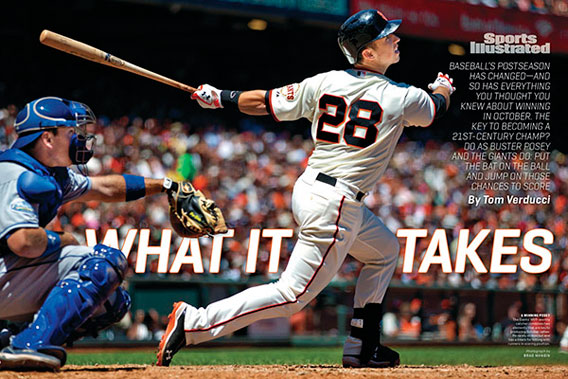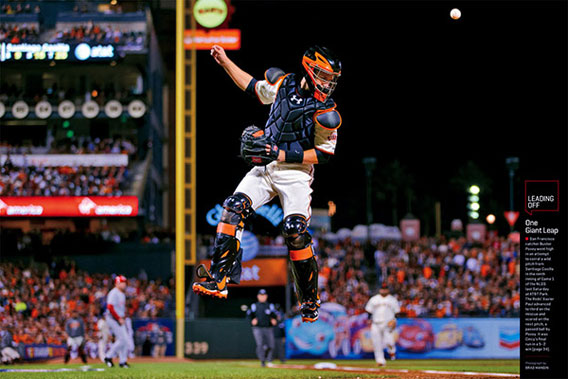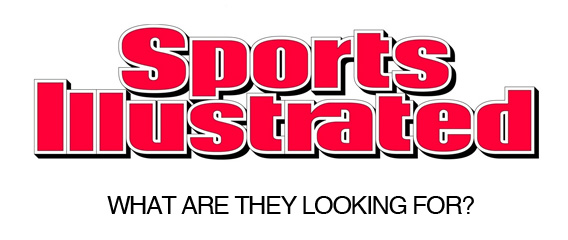Getting Hired: What Sports Illustrated Looks For In Photographers
 As part of our latest free guide, Growing Your Sports Photography Business, we interviewed Brad Smith, Director of Photography atSports Illustrated. Prior to his gig at SI, Brad served as the Senior Sports Photography Editor at The New York Times for 12 years. He talked to us about what he likes to see in a photographer’s portfolio, the types of images (and photographers) he’s looking for, and why.
As part of our latest free guide, Growing Your Sports Photography Business, we interviewed Brad Smith, Director of Photography atSports Illustrated. Prior to his gig at SI, Brad served as the Senior Sports Photography Editor at The New York Times for 12 years. He talked to us about what he likes to see in a photographer’s portfolio, the types of images (and photographers) he’s looking for, and why.
What makes a good freelance hire for Sports Illustrated?
I have three major needs. First, and most importantly, I look for somebody who has really good, unique, and visually interesting content that shows they have a relationship with the subject. I want to know that a photographer has a knack for photography, that it’s not all about technique and post-production. Photographers fall into that trap. They rely on certain technology, cameras, lighting or Photoshop, etc. That’s all-important, but you have to have some kind of a relationship with a subject to show something a little more organic.

Photo by Brad Mangin for Sports Illustrated
Second, I look at a photographer’s location. I can’t say it’s not important; it’s significant. If you live in the middle of someplace where I have no photographers, suddenly you become much more interesting. I can’t fly everybody around the world.
Third, and this is incredibly important, is someone’s “maintenance value.” By that I mean, are you the person who’s going to call me 15 times because you can’t find a bagel store and you wanted to bring bagels to the photo shoot? Or are you going to figure out how to find the bagel store on your own. As a photographer, you must be able to problem solve for everything from equipment issues to general logistics. I’m not interested in a photographer who needs a great deal of hand-holding. If you develop that kind of reputation as a photographer, you’re going to get pushed aside. I’m interested in people who work hard, who get the job done and are professional. When I hire someone as a freelancer, they are representing both me and Sports Illustrated on that assignment. Because at the end of the day, if there’s an athlete we’re photographing and there’s a problem on the set, no one ever points out the photographer who was a problem – they point out that Sports Illustrated was the problem. That puts our magazine in a bad light.
I put my reputation on the line every time I call an athlete and ask them to take time out of their lives to be photographed. It’s not easy to be photographed; it’s time consuming. You want the experience to feel productive and somewhat enjoyable. A professional and efficient photographer is the key to making that happen.
What kind of images are you looking for?
What I’m not looking for are images of people standing against a white backdrop. I’m not interested in athletes being posed, throwing a ball in the air so you know that he’s a football player. I’m not interested in that. Those pictures speak more to the technique of the photographer, which I truly appreciate for a lot of things, but what we’re looking for at Sports Illustrated are images that can bring a little of the athlete’s life into people’s homes. I’m more interested in an environmental setting. For example, I’d much rather have a picture of a football player with jeans on in a pickup truck with his feet over the edge of the truck bed. I think those images are more telling, if not more interesting, than the actual game.
I am exceptionally interested in a photographer with original story ideas where one can highlight items like that arrow quiver. That’s one thing you can’t put a value on. Some ideas might be cliché and some have already been done, but I remind photographers that when you pitch an idea, the worst thing that can happen is somebody says no. Don’t be shy about promoting story ideas. It could be something you’d like to do—like a story on how a hockey puck is made for example – or something you’ve already done but that can still be run. I ran plenty of feature photo essays at the Times when the event happened weeks or a month earlier.

Photo by Brad Mangin for Sports Illustrated
How do you handle emails from unknown photographers?
I look at almost every email unless they go into my junk folder. If someone sends me an email that says, “This is new work from Bob Smith,” I open it up and I look—it takes seconds. I don’t spend a lot of time with unsolicited emails, but if it’s something that captures my attention off the bat with a great subject line or photo, then I look up the photographer. I can tell from looking at a few of their pictures whether it’s something I want to pursue. If I’m not interested then I delete it. But you never know, there could be this one amazing picture that comes out of nowhere, from a person who lives someplace I have no photographers, and I think, thank you!
What do you want to see in a sports photographer’s portfolio?
When someone comes to show me a portfolio, they think they have to show me only sports imagery because I’m the sports editor. I’m all for seeing a lot of sports, and if that’s all you want to shoot, then that’s all you should be showing me. But today it’s not beneficial to stick to just one area. The days of me sending someone out just to shoot a game are long gone.
At Sports Illustrated we’re more interested in seeing someone spend quality time with an athlete – at home, at school, with his family. It’s really important that you can have a relationship with people. And that’s why it’s important to me that someone can shoot a portrait and also shoot a feature-style photo; these require a different kind of relationship. It’s one thing to stand with a 600 and shoot a football game; it’s another to go into someone’s home and have the sensitivity and understanding to make him comfortable enough to be photographed. That’s not an easy thing to do, and the photographers who can are really valuable.
I’m all for artistic, quirky and funny. I’m not saying everyone has to conform or pigeonhole themselves. I’ve worked with some photographers who you’d think are really whacky, unpredictable people. I’ve worked with David LaChapelle, for example. I’d never met him in my life; I just knew about his work from books. Before he came in I thought he’d bring an entourage of people and someone from the circus. I didn’t know. But I’m telling you, it was one of the best experiences I’ve ever had. He was easy to work with, a total pro. Incredibly creative, a total individual, yet when it comes time for meetings and getting to work, he knows exactly what he’s doing. You can learn from that.
What about a photographer’s website will turn you off?
My biggest website turnoff is when someone doesn’t have contact information. When I have to click on a link that says ‘contact me’ and then I have to fill out a form in order for you to call me back, I’ve lost all interest in you. If it were a date it’d be over, I’d be asking for the check.
What general advice would you give to any sports photographer?
Be professional. You have to be true to yourself and who you are – don’t pretend to be someone else – but this is a business so treat it as a business. If you have to photograph someone at 3:00, show up at 3:00, if not a little bit before. These little things make an impression on people, and it comes back around that it was a good experience for the subject.
Don’t get discouraged because people aren’t hiring you. Unless people are telling you that they won’t ever hire you, keep following up. What you want is to be in dialogue with people. Go to lectures, navigate through the world and start to meet people. That’s all part of the deal. You can’t just sit by the phone and wait for it to happen.
© 2013 Copyright ShootTheCenterfold.com. All rights reserved




















